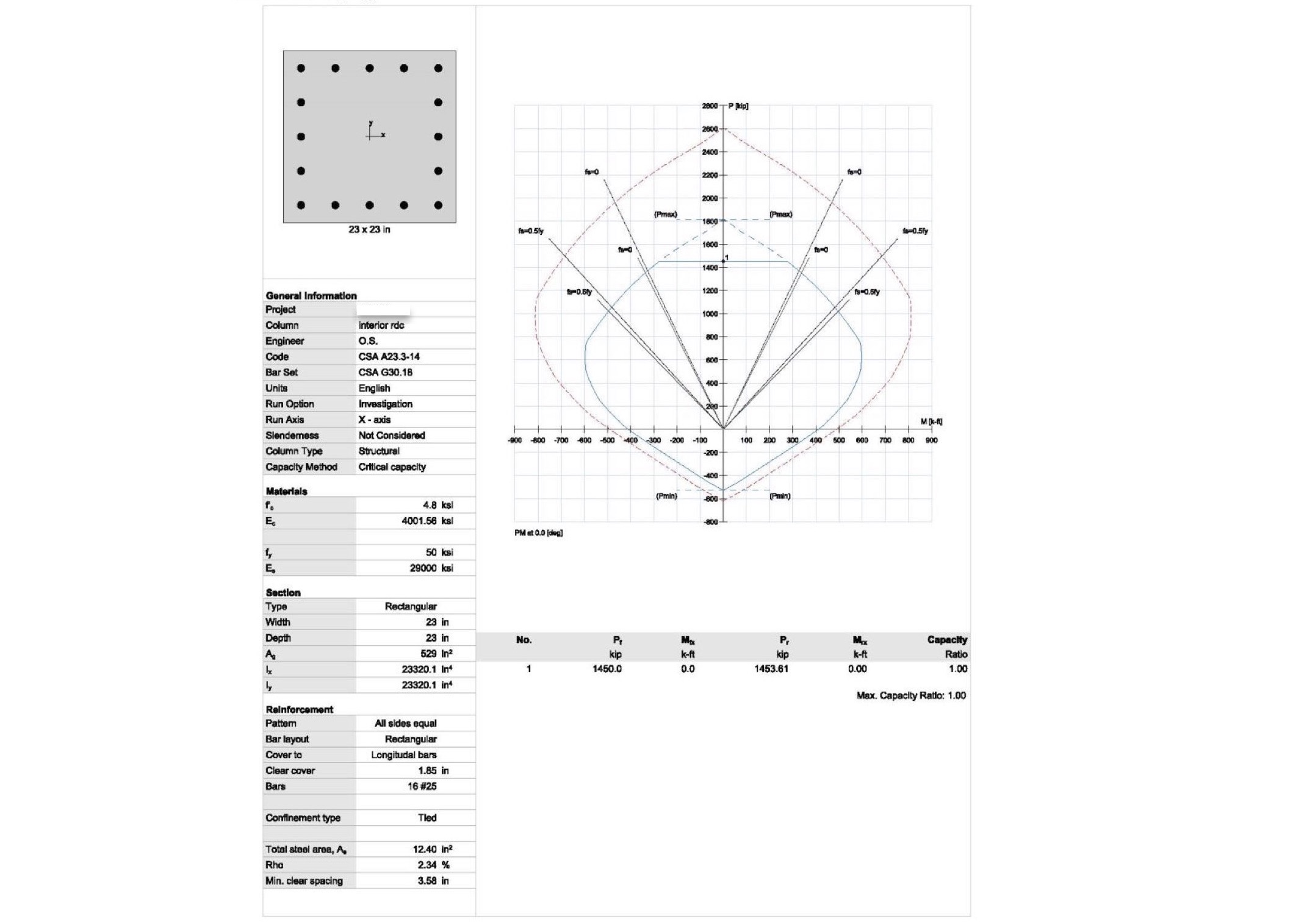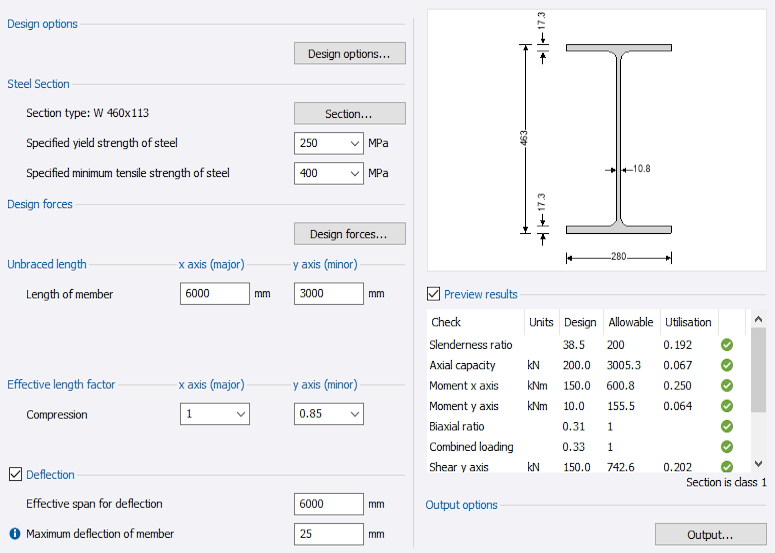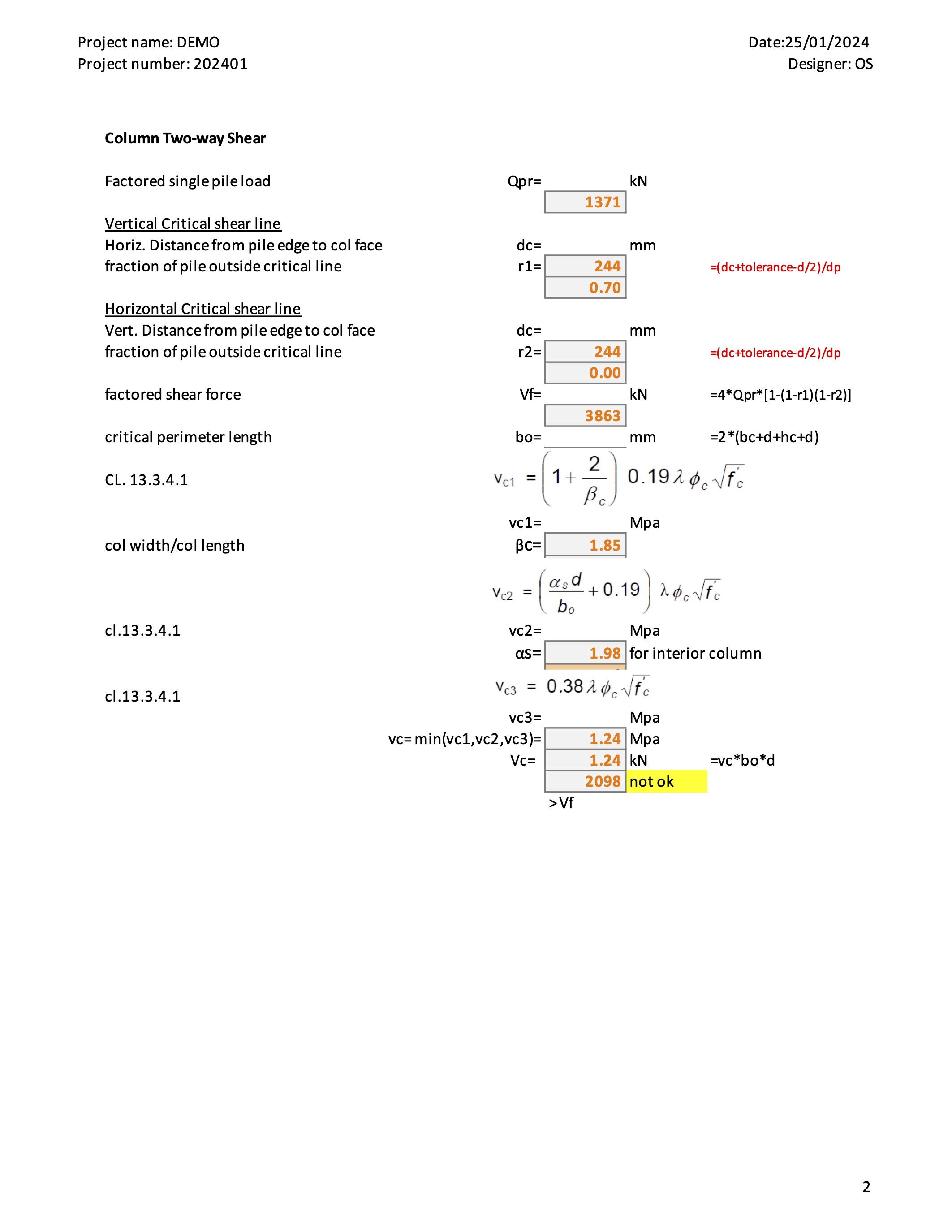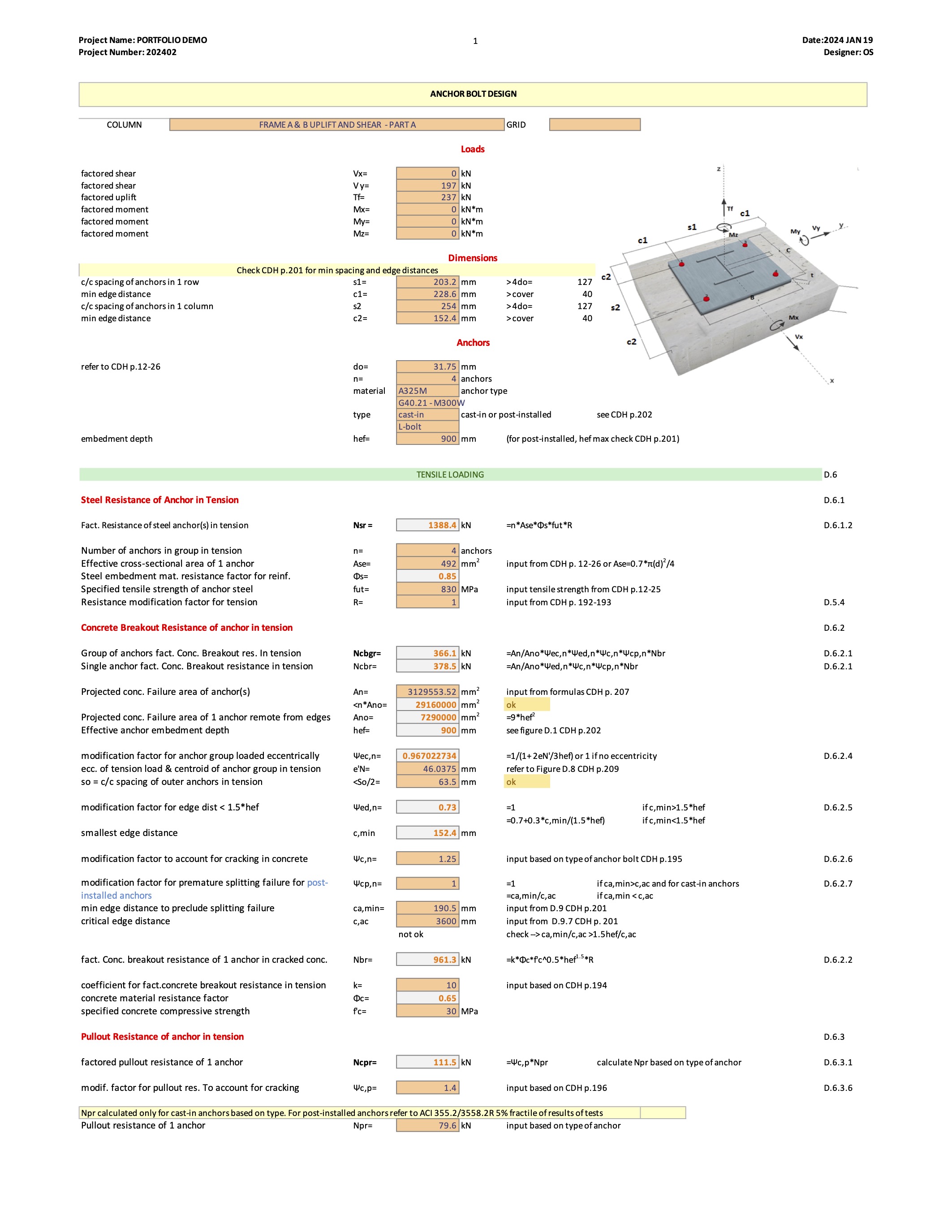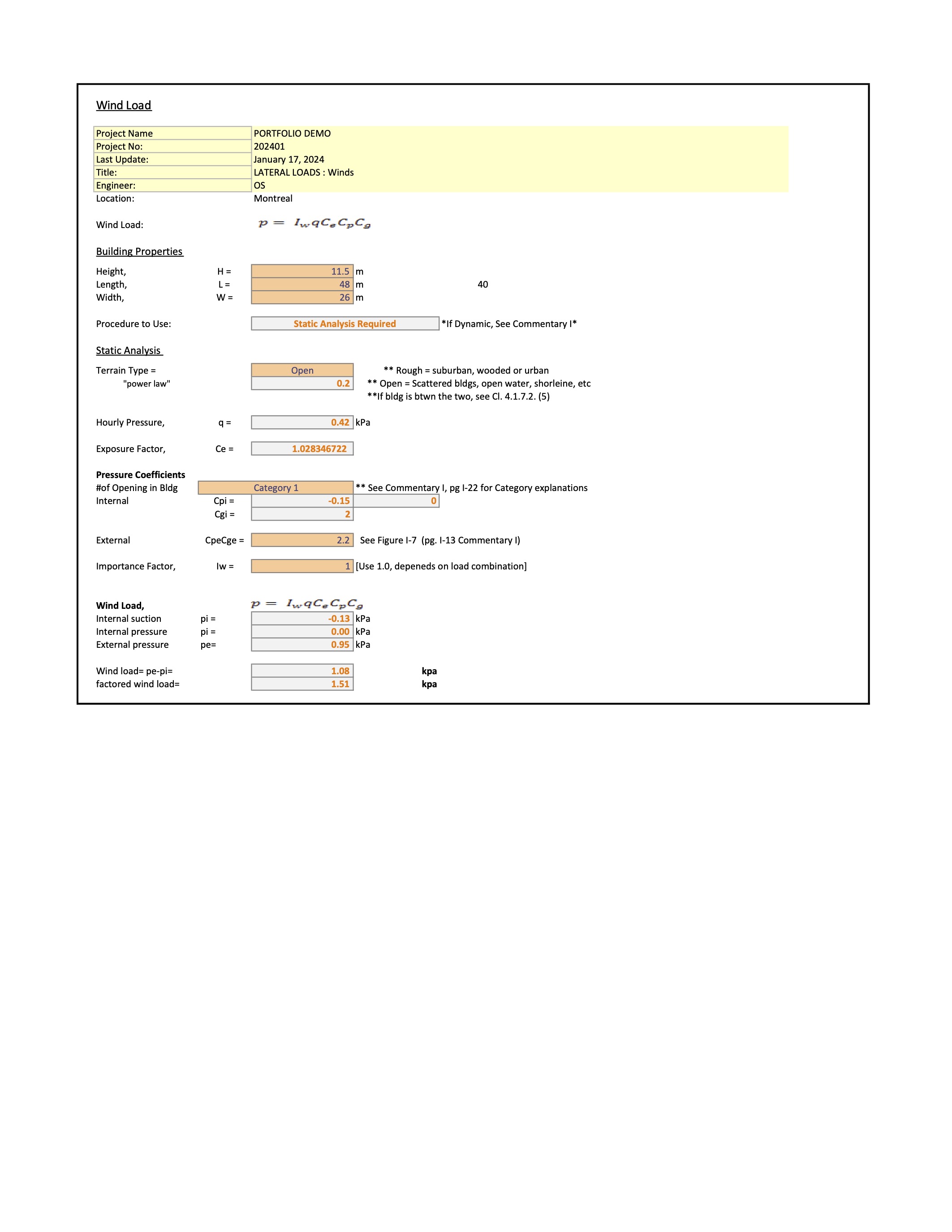Engineering Calculations
On a daily basis, my work involves a diverse range of tools and resources essential for structural engineering tasks. This includes using specialized structural analysis software like SAP2000 and ETABS for detailed structural analyses. Additionally, I frequently employ Excel spreadsheets and Mathcad sheets for basic calculations and data organization. For more complex issues or special studies, I rely on excerpts from literature, insights from subject-matter experts, and information from software manuals. Of course, adhering to design codes and standards is integral to my work, guiding everything from initial concepts to final hand calculations. This multifaceted approach ensures that my engineering designs are robust, compliant, and thoroughly vetted.
-
Engineering Software Calcs
The output of engineering software includes the results, data, and visualizations generated by specialized software tools. This output encompasses a wide range of information, including structural analysis reports, design calculations, graphical representations of structural behavior and optimization results.
-
Excel Spreadsheets Calcs
Excel and structural engineering design are inseparable. Spreadsheets are versatile tools that allow various calculations, charts and data organizations to be performed and replicated on a large scale efficiently and accurately. Reports related to structural analysis, design, and documentation could readily be generated.
-
Mathcad Engineering Worksheets
Mathcad is exceptionally powerful for documenting lengthy calculations and delineating load paths. Its efficiency shines through when handling extensive and repetitive calculations, streamlining the process of documenting load distributions, iterative analyses, and intricate mathematical relationships. This capability not only enhances the clarity and organization of design calculations but also facilitates comprehensive reviews and revisions, ensuring accuracy and reliability in structural engineering documentation. A sample here.
-
Hand Calculations
Hand calculations in structural engineering design represent a cornerstone of traditional engineering practices. A valuable documentation, offering a transparent and auditable record of design calculations and decisions. Hand calculations play a pivotal role in complementing modern computational methods. A simple calculation.
-
Special Study Packages
Special study packages encompass dedicated research and documentation efforts focused on specific concepts, load transfer mechanisms, software solution verification methods, or specialized topics of investigation. These packages are meticulously prepared, often requiring a day or more of intensive research and analysis, to compile comprehensive insights, data, and findings. They serve as valuable resources for understanding and addressing unique challenges, verifying software solutions, exploring innovative approaches. Samples cantilever deflection and unbalanced moment.
-
First Principles Packages
First principles are foundational principles that underpin engineering concepts and solutions, emphasizing a fundamental understanding of physics. In the age of automation, optimization, and fast calculations, the importance of returning to first principles cannot be overstated. These principles allow us to distill complex problems into clear fundamentals, ensuring that engineering solutions respect the governing laws of physics.
In my work, I recognize the value of first principles and often prepare packages centered around studying specific concepts or situations from this perspective. These packages delve deep into the core principles relevant to the problem at hand, breaking down complexities and providing a solid framework for analysis and decision-making. By employing first principles, every problem, regardless of its complexity, can be simplified and tackled methodically, leading to robust and reliable engineering solutions.
The practice of carrying these studies and calculations foster a deeper understanding of the underlying principles and behaviors governing structural systems, enhancing problem-solving skills and promoting innovation in engineering solutions.
